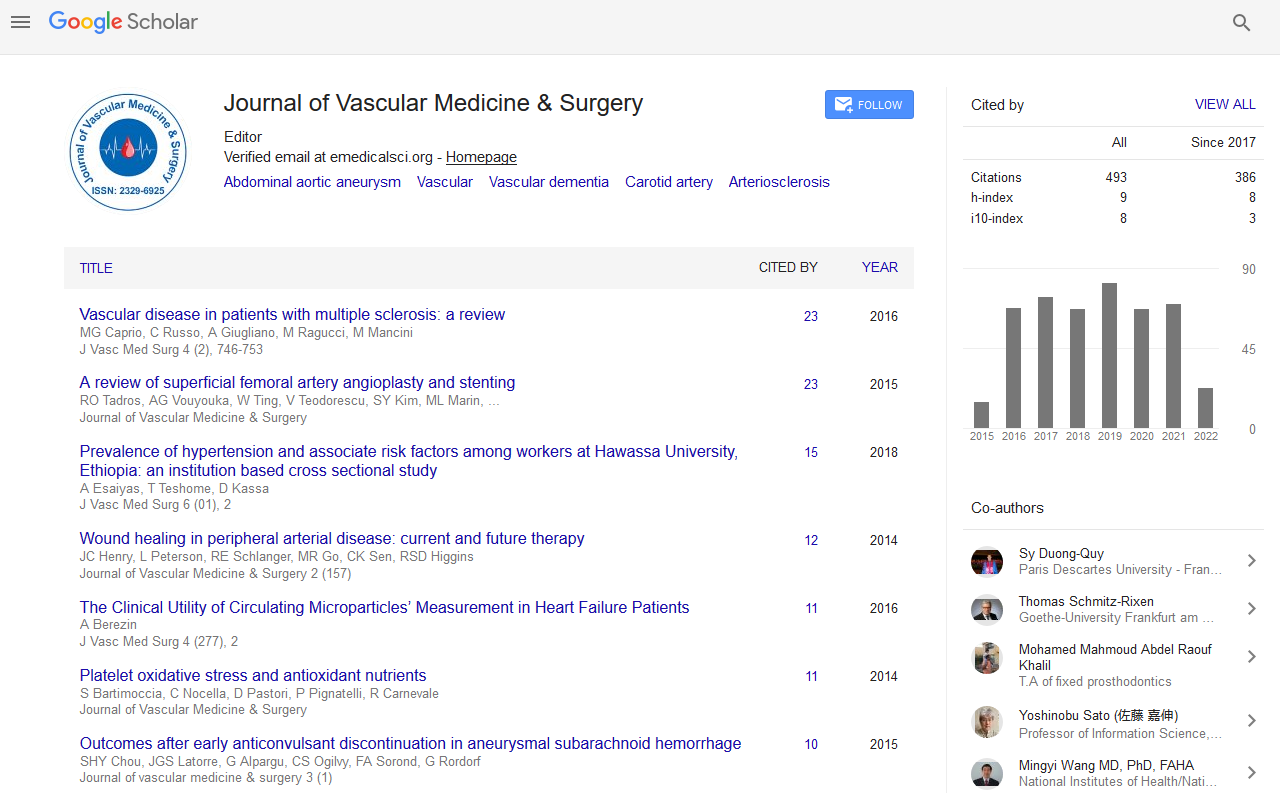Indexed In
- Open J Gate
- Academic Keys
- RefSeek
- Hamdard University
- EBSCO A-Z
- OCLC- WorldCat
- Publons
- Euro Pub
- Google Scholar
Useful Links
Share This Page
Journal Flyer

Open Access Journals
- Agri and Aquaculture
- Biochemistry
- Bioinformatics & Systems Biology
- Business & Management
- Chemistry
- Clinical Sciences
- Engineering
- Food & Nutrition
- General Science
- Genetics & Molecular Biology
- Immunology & Microbiology
- Medical Sciences
- Neuroscience & Psychology
- Nursing & Health Care
- Pharmaceutical Sciences
Abstract
Comparison of Long-Term Outcome after Endovascular Therapy versus Bypass Surgery for Superficial Femoral Artery Disease
Yanase Y, Fukada J and Tamiya Y
Background: Recent advances in endovascular therapy (EVT) have increased its utility in the management of peripheral artery disease. We assessed long-term outcomes after EVT versus bypass surgery for superficial femoral artery (SFA) lesions.
Methods: Revascularization procedures for SFA lesions were performed in 107 limbs (52 limbs undergoing bypass surgery and 55 limbs undergoing EVT) at our facility between January 2007 and December 2015.
Results: The average period of postoperative monitoring was 41.9 months and 31.1 months in the bypass and EVT groups, respectively. Risk factors were similar when comparing the two groups. In the bypass group, TransAtlantic Inter-Society Consensus (TASC) II type C/D lesions were present 47 limbs (90.4%). In the EVT group, type A/B lesions were present in 54.2 limbs (98.2%). The primary patency rates at 1 and 5 years were 84.1% and 62.8%, respectively, in the bypass group and were 68.0% and 49.7%, respectively, in the EVT group (p=0.127). The secondary patency rates did not significantly differ between the two groups, either.
Conclusion: There was no statistical significance between the bypass and the EVT groups with regard to long-term patency. In both groups, the revision was sometimes required, so postoperative care is important.


